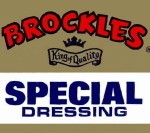This article is written not for copywriters, but for the people who hire and critique them.
You’ve hired a copywriter to write your project, and here they come back at you with their first round, hopefully on time and with no budget alarms going off. Now it’s your job to give honest, specific critique that will enable them to go to the next draft. Here are a few tips. (This article was originally about long-form direct mail copy, but I believe it applies to web pages and even banners and short ads.)
1. Remember that you only get one impression to have a first impression. So, clear your desk and your head and close your door if you have one. If the copywriter is sitting anxiously in your office, ask them to go away.
Now, start by giving the copy a quick scan from the perspective of the intended reader. (If you don’t know who this prospective reader is, you better find out before you read the copy.) Let it sell you. If it leaves you flat, you may have a problem. You’ll analyze why as you continue.
Then go back and read it again, several times, applying a different test each time. (I am borrowing these filters from either Bob Bly or Ed McLean, thank you gentlemen. It is even more productive to come up with your own filters depending on your specific knowledge of your business.)
- Is it logical? Is there a premise that is established up front and then supported throughout? Are there logic errors, things that don’t make sense, which can distract the reader?
- Is it emotionally consistent? The emotional pitch could be high, low, ironic, satiric… but it needs to stay the same from beginning to end.
- Is it clear what is being sold or presented? Is the product or service presented in such a way that the reader grasps its big benefits quickly then understands additional benefits as they read on for more details?
- Is it clear what you want me, the reader, to do? What is the call to action?
2. Now make your notes for the writer. Remember that CRITIQUE and CORRECT are not the same thing. If you take a pencil and start aggressively marking up the copy, the writer will step back…they’re no longer fully invested in the project because you’ve taken over part of their role.
It’s far better to describe what you are trying to accomplish on a high level, then leave it to the writer to interpret and execute. Instead of telling them what you want, tell them what you want to happen. It’s their job to find a way to execute.
As usual, David Ogilvy has something brilliant to say on this point: “Don’t keep a dog and bark yourself.”
3. Now it’s time to meet with the writer—in person, on the phone, or by email. Be careful. Even very experienced and thick-skinned writers get irritated when they feel a client isn’t giving their many hours of hard work the respect which is due.
It’s never a bad thing to compliment a writer on a job well done—but mean it when you say it. Don’t start with faint praise that turns into a slashing attack. If you’re up to it, you can use a positive statement to transition to a critical one: “I really liked the way you described the benefits of the whole life plan. But the term life description just didn’t seem to have the same level of enthusiasm.”
As you get into specifics, refer to the creative brief. (You did give the writer a brief, right?) That way you can use an intermediary to smooth the conversation. It’s not you that says their copy is off (if it is), rather it just doesn’t follow the creative brief. A good writer will not only follow the brief but will be ready to defend sections of the copy where the brief was difficult to follow, and that is helpful.
And most important, never say “I don’t like the copy” or anything negative without supporting your statement with specific examples and logic and without being able to offer equally specific solutions for problems you bring up. It’s lazy, emotionally manipulative and unproductive to dislike the copy on personal grounds and it’s not likely to get you a better product in the next round.
4. Agree on what happens next. As a copywriter, I quite often have my first rounds accepted with minor changes because I have been diligent about executing a clearly executed assignment. Don’t be afraid to just say, “I like it and here’s your check.”
But if you’re asking for rewrites be very specific about what you want and why, and follow it up in writing with an email to the writer. And be sure to include the next schedule milestone.


